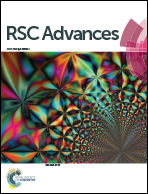Biological tooth root reconstruction with a scaffold of swine treated dentin matrix†
Abstract
Treated dentin matrix (TDM) is an ideal scaffolding material with odontogenic ability, which is important for supporting cell growth and regeneration of dental tissue. The source of TDM could be a key point for clinical application in the future. Xenogenic TDM from swine (sTDM) may be an ideal alternative because of its high similarities with human anatomy and structure. However, due to species-specific differences, it remains unclear whether TDM fabrication methods can be extended to sTDM. In the present study, we have optimized the fabrication method to fabricate a sTDM scaffold material with odontogenic ability. Furthermore, dental follicle cells from swine (sDFCs) were combined with sTDM and were implanted into the alveolar fossa of swine to reconstruct the biological tooth root in vivo. The results showed the step-by-step process of demineralization by EDTA was effective and necessary. The treatment times with 17% EDTA, 10% EDTA and 5% EDTA should be at least 15 min, 15 min, and 5 min, respectively. Under the induction of sTDM, the growth and viability of seeding cells were significantly improved. Most importantly, sTDM in vivo could induce and support the regeneration of complete tooth root tissues. The cells within and surrounding the regenerated tissues were positive for green fluorescent protein (GFP), indicating that sDFSCs are responsible for the regenerated tooth root tissues. In conclusion, sTDM, which was fabricated by an optimized method, could be suitable for reconstruction of tooth roots in vivo in swine.


 Please wait while we load your content...
Please wait while we load your content...